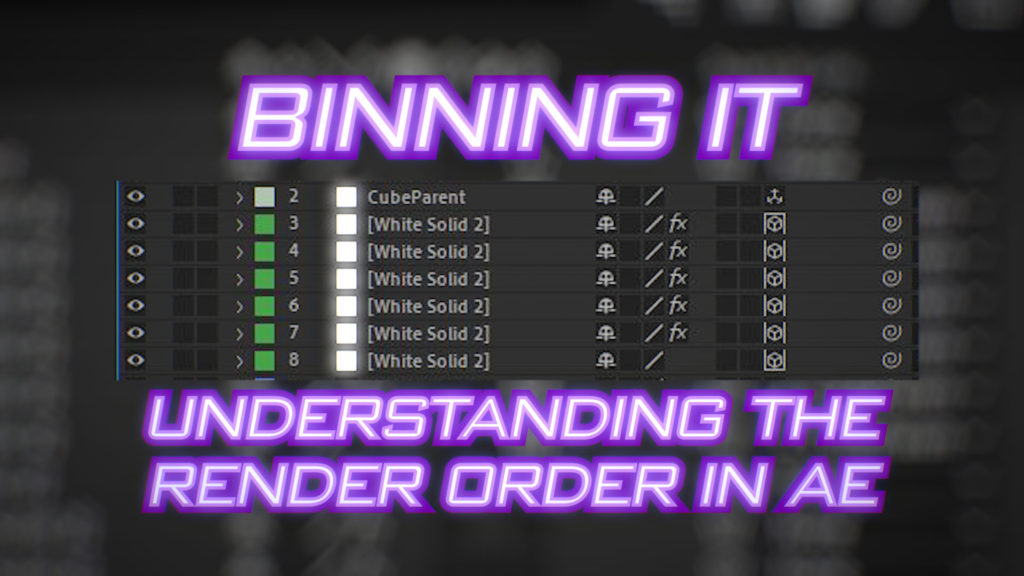After Effects revolves around a layer-based timeline, and this core functionality is largely responsible for defining what After Effects is. When it’s time to render a composition, the layers in the timeline are processed in a specific order to produce the final image. In many cases, this is a very simple and intuitive process – this layer-based paradigm has been the key to After Effects’ success and enduring popularity.
However After Effects has been around for over 25 years, and since the original release a number of key new features have been added which have made the rendering process more complex. Adjustment layers were a welcome addition with the release of version 4, and 3D layers came a few years later. But with these additional new features came additional complexity – especially when combining 2D and 3D layers in a single composition.
Despite the fact that I’ve been using After Effects for over 20 years, I only recently learned that the term “binning” was used in relation to the way that 2D and 3D layers interact in the timeline. In many of my other articles, I’ve referred to the After Effects rendering process as something that can take years to learn – especially when it comes to combining 2D and 3D layers – but I didn’t know what a “bin” was. Now I do, and if you watch the video then you will, too!

Since the start of the year, Adobe have been working on some interface improvements to help users understand what “binning” is, and how it works. At this point, those changes are still in Beta – but the Beta version of After Effects is public, so if you have a Creative Cloud subscription then you can download it and try it for yourself.
To provide some background information on why these seemingly simple changes are so significant, I’ve created a demonstration that steps through the After Effects rendering process – starting with the very basics, and ending with a demonstration of the new Beta interface. It’s a long video, and perhaps not the most exciting one. But it’s examining the After Effects rendering order, and the layer-based timeline is so definitive that this video is really about understanding After Effects itself.
As long as this video is, it still doesn’t address every single aspect of the After Effects rendering engine – and I should probably clarify that it’s looking at the default “Classic 3D” renderer. Already, when editing the video down I can think of more details or nuances that I could have included, but it would take hours to really go through absolutely everything.
If you’ve found this interesting, then check out my 18-part series on “After Effects and Performance“. This in-depth series examines what After Effects does, and how it does it, and provides even more insight into the rendering process.


